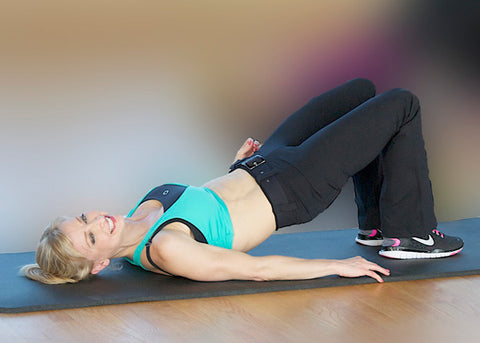What Is Resiliency and Why is it Important?
by Angie Miller
 Recently I watched the final episode of an old TV series, "Six Feet Under," and like most final episodes I felt like I was saying goodbye to old friends. I found myself emotionally spent, but also amazed and touched by the strength and resolve of the human spirit, something that series captured very well. Loss, hardship, personal setbacks, and even tragedy are a part of life, but those experiences don’t define us nearly as much as our ability to move forward. I teach a course in Stress Management, and the word I use is resiliency. It’s the latest buzzword in the world of stress management because it’s essential that we have, or learn this trait in order to navigate life successfully. Individuals who are resilient are able to rebound and get back on their feet no matter what comes their way. They meet life’s challenges head on, and they’re able to adapt to change. With resiliency comes the ability to be optimistic, flexible, and courageous. I tell my students that resilient people seem to have springs on their feet. When life knocks them down, they get right back up.
Recently I watched the final episode of an old TV series, "Six Feet Under," and like most final episodes I felt like I was saying goodbye to old friends. I found myself emotionally spent, but also amazed and touched by the strength and resolve of the human spirit, something that series captured very well. Loss, hardship, personal setbacks, and even tragedy are a part of life, but those experiences don’t define us nearly as much as our ability to move forward. I teach a course in Stress Management, and the word I use is resiliency. It’s the latest buzzword in the world of stress management because it’s essential that we have, or learn this trait in order to navigate life successfully. Individuals who are resilient are able to rebound and get back on their feet no matter what comes their way. They meet life’s challenges head on, and they’re able to adapt to change. With resiliency comes the ability to be optimistic, flexible, and courageous. I tell my students that resilient people seem to have springs on their feet. When life knocks them down, they get right back up.
For some people, being resilient comes natural. They have characteristics that help them overcome adversity and no challenge seems too great. But even for those who don’t bounce back with ease, resiliency is a trait that can be learned. All of us can be taught skills that will make us more adaptable. Skills that will help us survive, and even thrive in the face of challenge. In his book, “Managing Stress,” Brian Luke Seaward talks about six characteristics that help a person become more resilient:
2. Creative Problem Solving: People who effectively solve problems are solution seekers. The problem itself doesn’t bog them down. Their energy is spent finding alternatives to help them move forward.
3. Compassion & Gratitude: We hear all the time that living a life of gratitude is the key to happiness and appreciation. With gratitude we are able to keep negative situations and events in perspective and focus on the big picture. We feel connected to others through service, and we don’t see ourselves as victims when adversity strikes.
4. Self-Care: Is about our sense of value and worth, and our personal investment in staying healthy and well.
5. Humor: Is having the ability to laugh at ourselves, and not take ourselves too seriously.
6. Purpose in Life: Is our ability to live an intentional life, with meaning and value, and to hold on to this even as life changes unexpectedly.
Resiliency is the cornerstone for living a healthy life. Each hardship gives us the opportunity to rebound, and to move forward with more experience and confidence than we had before.
~Angie
Angie Miller is the star and creator of the Bedroom Body™ Workout and other top selling exercise DVD’s. Passionate about fitness and education, Angie teaches at Northern Illinois University and is a Certification Specialist for the Aerobic and Fitness Association of America (AFAA). She is a freelance writer, group fitness instructor, personal trainer, and proud mom. Learn more about Angie at: http://www.angiemillerfitness.com
 For those who are wary of weights and addicted to cardio, I posted a blog
For those who are wary of weights and addicted to cardio, I posted a blog 
 A Pushup is a great functional move that works the chest while toning the arms and strengthening the core. It’s one of my favorite exercises because it’s a bodyweight move requiring no extra equipment. It’s just you against gravity, and that’s the foundation of all training. Bodyweight exercises improve our form and posture and increase our overall body awareness.
A Pushup is a great functional move that works the chest while toning the arms and strengthening the core. It’s one of my favorite exercises because it’s a bodyweight move requiring no extra equipment. It’s just you against gravity, and that’s the foundation of all training. Bodyweight exercises improve our form and posture and increase our overall body awareness. 

















